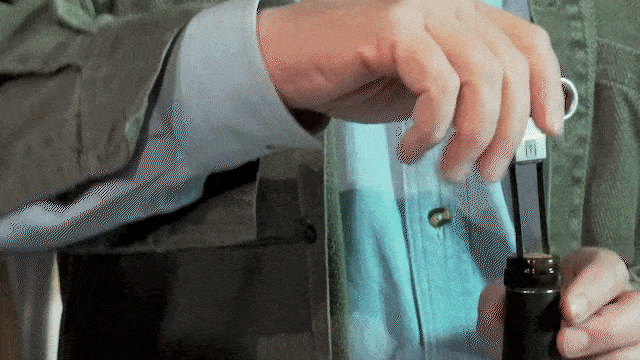
“That cork plays an essential role in the development of the wine in bottle. The wine would not become that magical thing that it is without its cork!” —Chris Howell
During the holidays, the darkest, coldest time of the year, we often have some of our warmest, most convivial celebrations, and this is when we are tempted to open older bottles and larger bottles to share with the gathering. Go with it—it’s a good temptation.
However, you might hesitate because of uncertainties about how to open and serve that large bottle—particularly, how to get out that pesky cork. Let’s be honest, it can take a bit of work and even some preparation. First, what is so great about a cork and why do we use it?
Quite simply, wine—especially wine made with low intervention as we do at Cain—benefits from a slow, gentle élévage, both in the barrel and in the bottle. That cork plays an essential role in the development of the wine in bottle. The wine would not become that magical thing that it is without its cork!
But when you’re finally ready to enjoy the wine, it’s time to remove it. After so many years in the bottle, the key issues are that the cork might be fragile and break or even crumble, or the cork might stick to the sides of the bottle.
The main thing to know is that even if the cork breaks, the wine is not damaged in any way. Those bits of cork will float on top of the wine in the neck of the bottle, and it’s sufficient to just splash out the first bit of wine and most of the cork will come out with it. If, in pouring the first glass, you still get a crumb or two, just pick it out with a spoon. Note: it is not necessary nor desirable to run the wine through a coffee filter.
:: :: :: :: ::
Here’s how to best remove the cork:
0: Stand the bottle upright for a day before you plan to open it—keep it in a cool location.
1: Clear a space on a counter or table and assemble your cork puller(s), a clean cloth, and a decanter if you plan to use it. A corkscrew with a long open spiral thread and a sharp point is very useful. The “Ah-So” two-pronged cork puller is often the best tool to use for older bottles. The “Durand” is a combination of both.
2: Cut the foil capsule below the bead on the neck—that bead is a drip ring intended to break the flow of wine down the side of the bottle.
3: Using a wet cloth or sponge, clean the top of the bottle.
4: If the bottle is ten or more years old, we strongly recommend using the Ah-So [here’s a video to show you the way]. The key is to break the seal between the cork and the glass bottle, and then it will move. If you’re using a traditional corkscrew, be sure to turn it completely down into the cork, because it is that last bit, just touching the wine, that will be the most fragile.
5: Proceed slowly and patiently. If, despite everything, the cork does break, don’t panic. Take a deep breath and continue to remove the first pieces of cork that will come out. Keep the bottle still and upright.
6: If some of the cork is still stuck in the bottle, use your traditional corkscrew to remove the last pieces of the cork.
7: When all else fails, sometimes a piece of the cork simply falls into the bottle. In this case it can be easiest to decant the wine into a carafe or pitcher.
8: Once the cork is removed, you may see a ring of deposit in the neck of the bottle. Gently pour out the first bit of wine as you rotate the bottle to allow the deposit to wash out into the glass. Allow the deposit to settle and you’ll find that the wine is good!
:: :: :: :: ::
Then comes the last question: To decant or not to decant? The main point of decanting used to be about separating the wine from the deposit that has settled to the bottom of the bottle, but there are two other considerations: ease of service and whether the wine will benefit from aeration. If it’s an older, more fragile wine, in a standard size bottle, I’d pour the wine carefully in one pass and avoid decanting. In general, the younger the wine or the larger the bottle, the more it will benefit from aeration. And the larger the bottle, the easier it is to serve from a decanter.
Though you’ll hear of people opening or decanting a wine hours before service, I’m inclined to do it at the last practical minute. That is, before the guests arrive, so that you have time to quietly focus on the task at hand, without friends looking over your shoulder.
The last thing is to get the wine into everyone’s glasses and give yourselves time to savor the wine. Fine wine, especially older wine, wants patient attention, even contemplation. Take note of your first impressions, but don’t rush to judgement and you’ll be rewarded!

—Chris Howell, Wine Grower
December 2023

